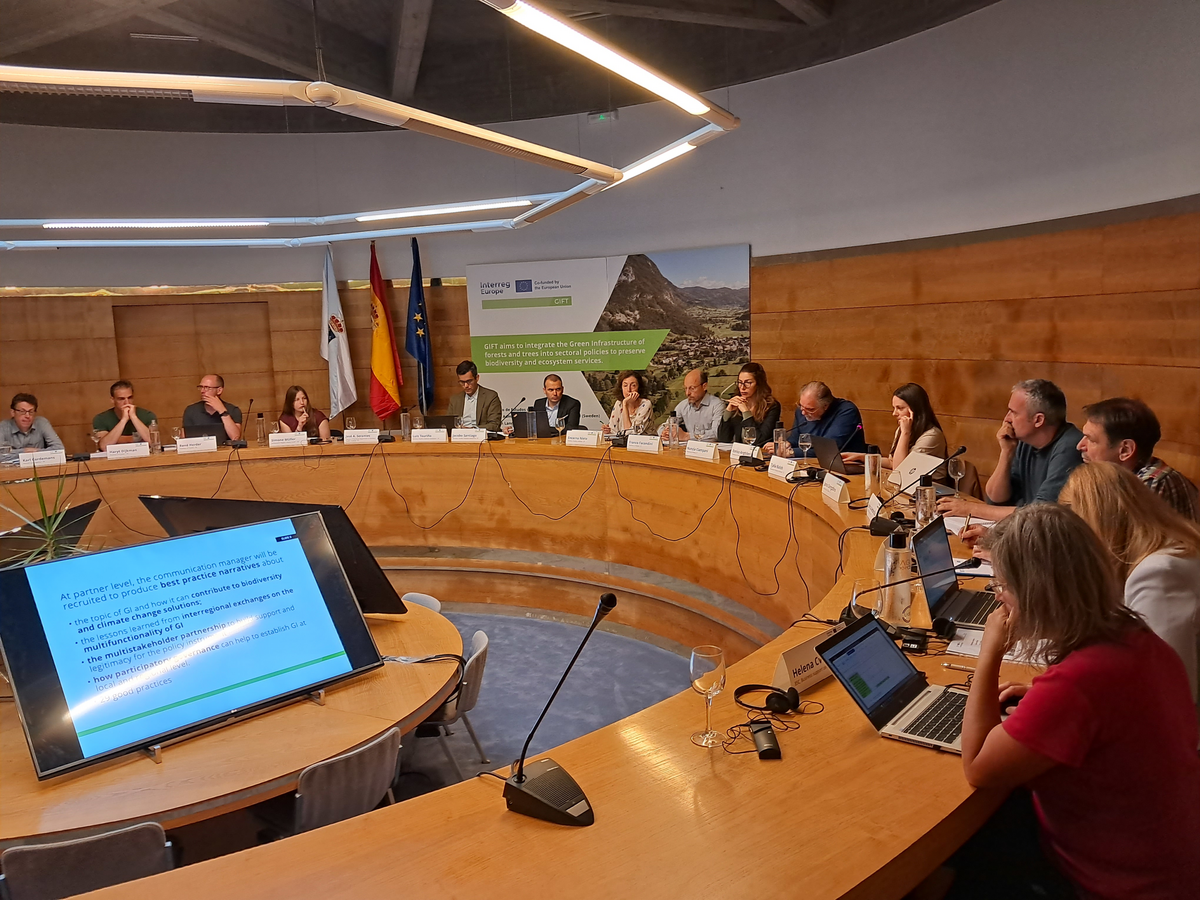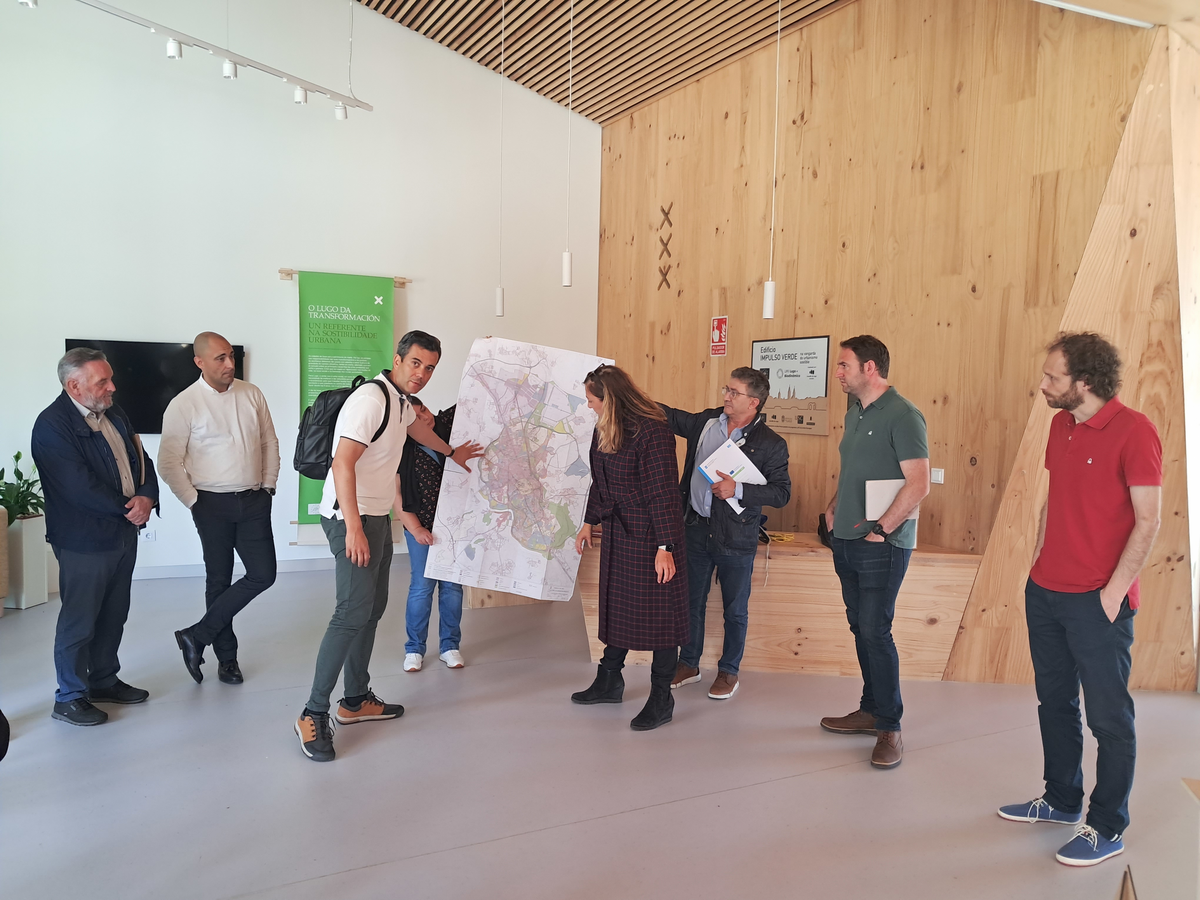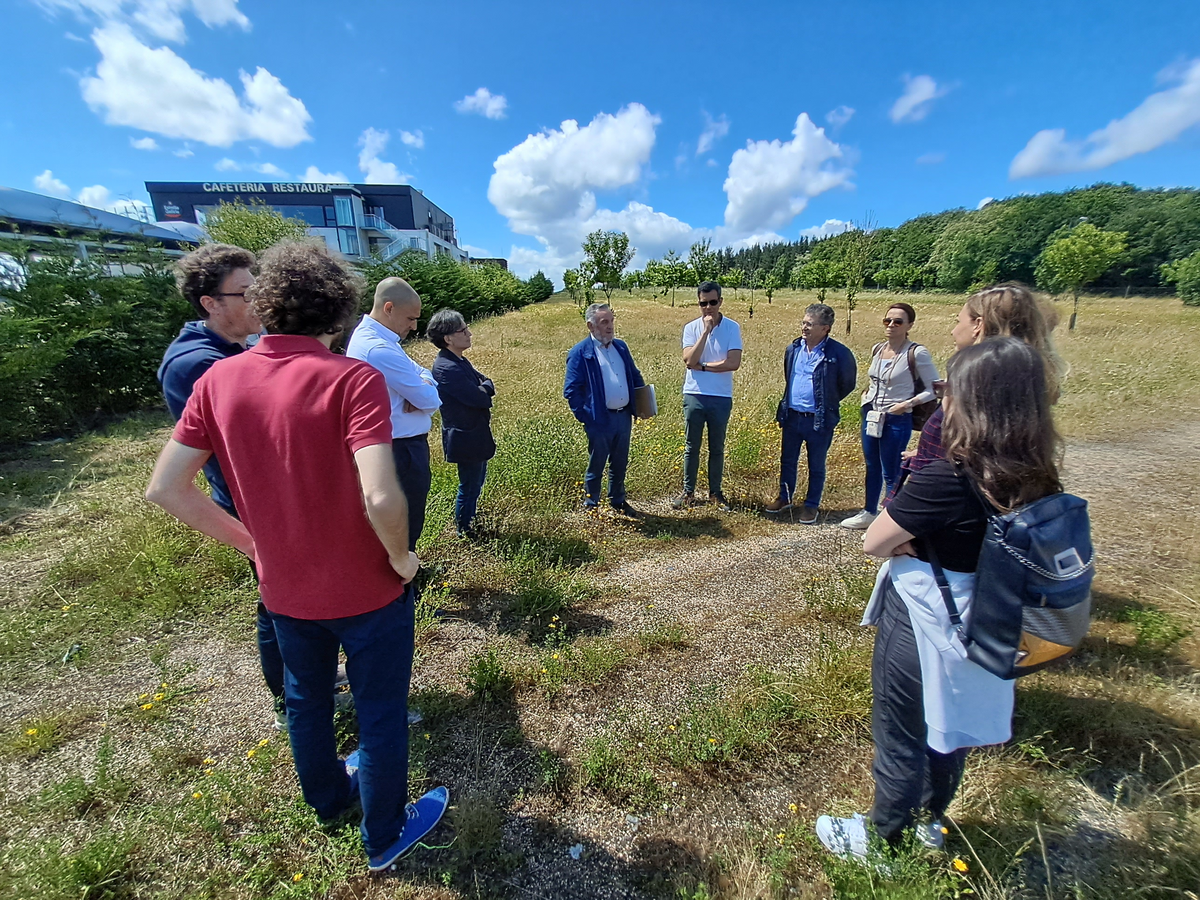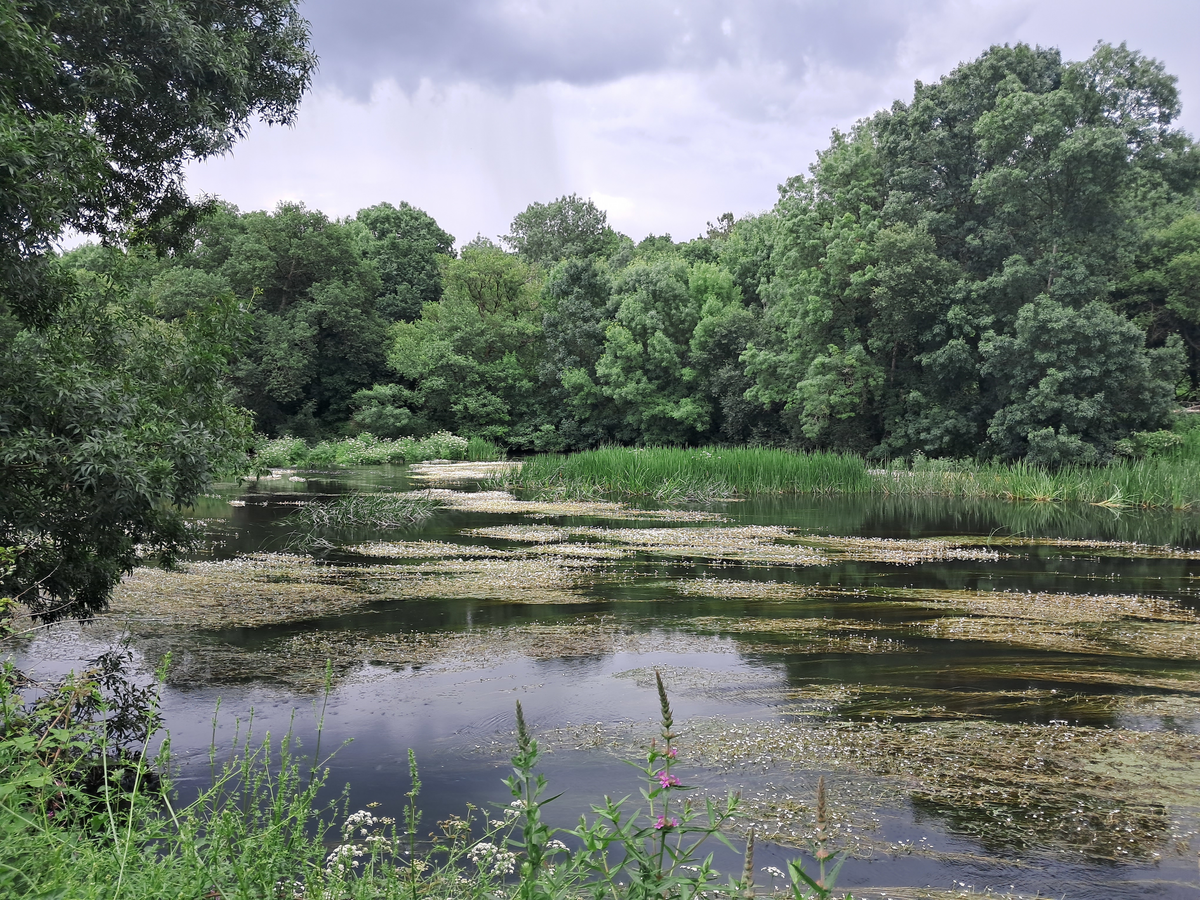
The first face-to-face partners' meeting of the Green Infrastructure for Forest and Trees (GIFT) project was held in Santiago de Compostela (Galicia) from June 6 to 8. Ten entities from the European Union were present, including the Regional Government of Västra Götaland (Sweden), the Territorial Agency of Flanders (Belgium), the Provincial Government of Fryslân (Netherlands), the Regional Agency of Leipzig (Germany), the Provincial Government of Rimini (Italy), the Slovenian Forestry Institute, the University of Latvia (Latvia), the Municipality of Zagreb (Croatia), the Business Support Center of Kranj (Slovenia) and the Instituto de Estudos do Territorio (Spain), lead partner of the project and entity responsible for the organisation of the event.
The Regional Minister of Environment, Territory and Housing of the Galicia Regional Government, Ángeles Vázquez, was in charge of opening the event, highlighting the importance of incorporating green infrastructure in land use planning as a strategic improvement in other sectoral instruments, particularly in landscape management.
At this meeting, each of the partners made a brief presentation to present the entity they represent, as well as those aspects of interest about their region for the rest of the participants. They also took advantage of the meeting to create synergies and discuss certain issues related to the project such as the setting of dates for future project events; the key aspects for the identification of Good Practices and the definition of the different Peer Reviews, the use of the PERFECT methodology for the assessment of public policies related to Green Infrastructure; the active participation of the relevant stakeholders interested in the project, as well as the presentation of key issues related to communication, among other aspects.
On the other hand, during the meeting, four study visits were made. The first one to the set of parks and green areas that border the historic center of Santiago and various elements of its local green infrastructure, with the aim of raising awareness and enhancing the value of the natural heritage of the city; the second visit was made to the Impulso Verde Building (Lugo + Biodinamico project) with the aim of learning about the planning of a multi-ecological neighborhood as a model of urban resilience; the third consisted of a visit to two recovered areas with native species as an example of green infrastructure that contrasts with the grey infrastructure environment (business park); and the fourth by the insular system of the Ínsuas do Miño, of great importance and extension by habitats and species characteristic of continental aquatic ecosystems, among which include various types of flood forests. This visit, integrated in the Terras do Miño Biosphere Reserve, offers natural, scenic and ethnographic values related to water management in Galician culture.
Following this meeting, the partners will continue to work on the exchange of experience, the identification of needs and the implementation of good practices to achieve the objectives of a Europe that is more resilient to climate change and enhances biodiversity, in short, to ensure that nature maintains its capacity to provide goods and services to society.
The project, which is mainly aimed at integrating green infrastructure into sectoral policies, and whose final objective is to prevent the loss of biodiversity and reduce the impact of climate change, is co-financed in 80% by the European Regional Development Fund (ERDF) and has a budget of 1,971,182.00 €.


 CONFERENCE
CONFERENCE

